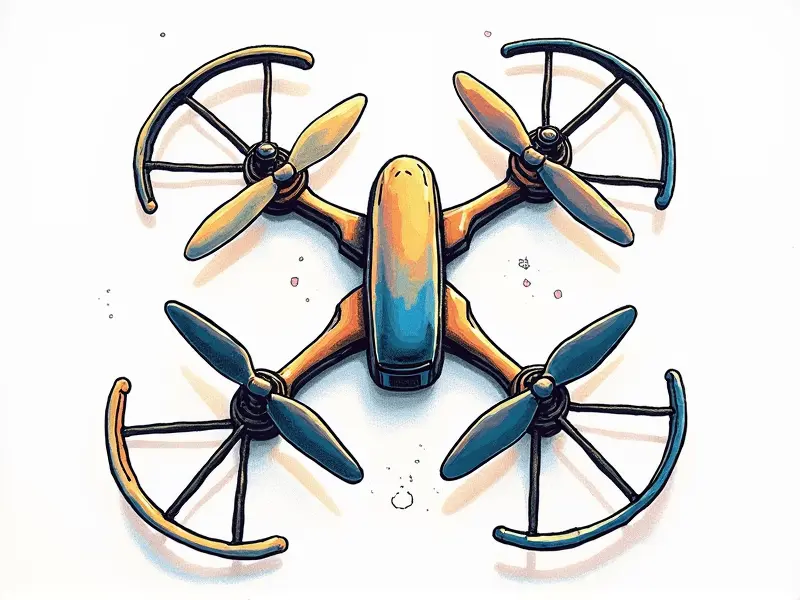What can repair drones fix?

Drones are versatile and powerful tools that have revolutionized industries ranging from photography to agriculture. However, like any piece of technology, drones can suffer damage over time or due to accidents. The good news is that many common issues can be repaired with the right knowledge and tools. This article will explore various aspects of drone repair, providing valuable insights on how to address and fix different types of drone malfunctions.
Common Drone Repairs Explained
Drones are complex machines composed of multiple components that work together seamlessly. When one part fails or gets damaged, it can affect the overall performance and functionality of the drone. Common repairs include fixing damaged props, repairing camera damage, addressing battery issues, solving motor problems, replacing frame parts, and troubleshooting GPS issues.
Fixing Damaged Drone Props
Damaged propellers are one of the most frequent issues encountered by drone users. Propellers can break or become misshapen due to crashes or rough landings. To fix damaged props:
- Inspect for cracks and deformities: Look closely at each propeller blade for any signs of damage.
- Replace broken parts: If a prop is cracked beyond repair, replace it with an identical spare part.
- Balancing the props: Use a propeller balancer to ensure both sides are evenly weighted and spinning smoothly.
Repairing Camera Damage on Drones
The camera is often one of the most expensive components in a drone, making it essential to address any damage promptly. Common issues include lens scratches, broken mounts, or electrical malfunctions:
- Clean and inspect lenses: Use a soft cloth and cleaning solution to remove dirt and smudges.
- Check for loose connections: Ensure all camera cables are securely connected to the drone’s circuitry.
- Replace broken parts: If any mounting brackets or internal components are damaged, replace them with new ones.
How to Fix Battery Issues
Battery problems can severely limit a drone's operational capabilities. Common issues include low capacity, swelling, and short circuits:
- Test battery voltage: Use a multimeter to check if the battery is holding charge properly.
- Replace swollen batteries: If a battery looks puffed up or feels warm, it should be replaced immediately.
- Check for corrosion: Clean any corroded terminals with a wire brush and apply anti-corrosion spray.
Solving Motor Problems in Drones
Motors are critical to the flight dynamics of a drone. Common issues include noise, overheating, and failure to start:
- Inspect motor connections: Ensure all wires and connectors are secure and free from damage.
- Clean dust and debris: Use compressed air or a soft brush to remove any buildup around the motors.
- Check rotor balance: Imbalanced rotors can cause vibrations, leading to motor overheating.
Replacing Drone Frame Parts
The frame is the backbone of a drone and protects internal components. Damage to the frame can occur from impacts or wear over time:
- Evaluate structural integrity: Look for cracks, bends, or missing pieces that compromise stability.
- Select compatible replacement parts: Choose frame components that match your drone’s make and model.
- Use appropriate tools: Screwdrivers, pliers, and other hand tools may be necessary for installation.
Fixing Antenna and Signal Issues
Antennas are crucial for maintaining a strong connection between the drone and controller. Weak signals can lead to erratic flight behavior or loss of control:
- Check antenna connections: Ensure all cables and connectors are tightly secured.
- Clean antenna elements: Remove dirt, dust, and moisture from the antenna surface.
- Replace damaged parts: If any part of the antenna is bent or broken, replace it with a new one.
Quick Fixes for Dinged Drones
Slight dents and scratches on the exterior can be easily repaired without affecting functionality:
- Use touch-up paint: Apply a small amount of matching paint to cover minor blemishes.
- Buff out scratches: Use a polishing compound to smooth out surface marks.
- Remove adhesive residue: Clean off any stickers or decals with rubbing alcohol and a soft cloth.
Simple Solutions for Broken Helis
Helicopter drones have unique challenges due to their design. Common repairs include fixing tail rotors, main rotor blades, and control linkages:
- Inspect rotor balance: Ensure both the main and tail rotors are properly balanced.
- Tighten loose screws: Check all connections for any signs of wear or looseness.
- Replace worn components: Swap out damaged parts like bearings, gears, and pulleys as needed.
Restoring Cracked Airplane Fuselages
Airplane drones can suffer from structural damage to the fuselage during crashes or rough handling:
- Evaluate extent of damage: Determine if repairs are feasible or if replacement is necessary.
- Use epoxy and fiberglass: For minor cracks, apply a thin layer of epoxy reinforced with fiberglass tape.
- Sand and finish: Smooth out any rough edges after repair to maintain aerodynamics.
Troubleshooting GPS Problems in Drones
GPS issues can lead to navigation errors or loss of signal. Common solutions include:
- Check firmware updates: Ensure your drone’s software is up-to-date for optimal performance.
- Clear satellite view obstruction: Move the drone away from tall buildings or dense foliage that block signals.
- Replace faulty GPS module: If the built-in GPS unit is malfunctioning, replace it with a new one.
Conclusion
Repairing drones can be both challenging and rewarding. By understanding common issues and knowing how to address them, you can extend the life of your drone significantly. Whether it's fixing damaged props, repairing camera damage, or troubleshooting GPS problems, having the right tools and knowledge is key to maintaining a functional and reliable drone.

